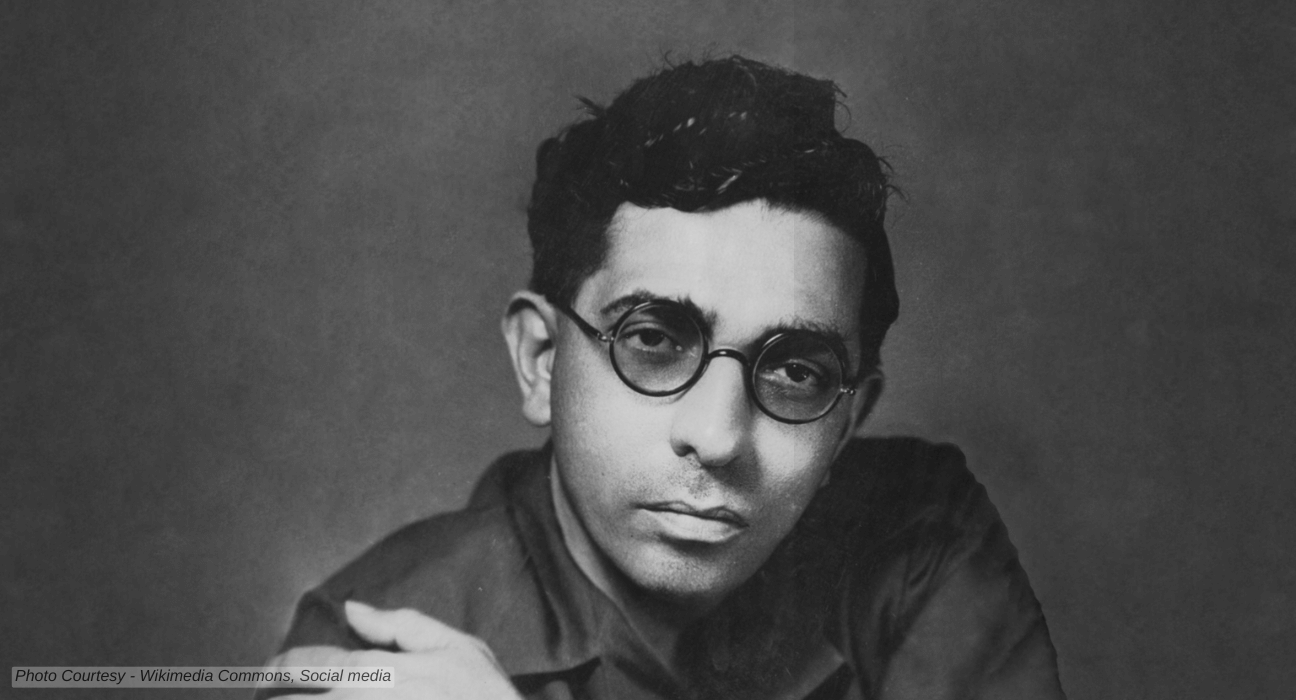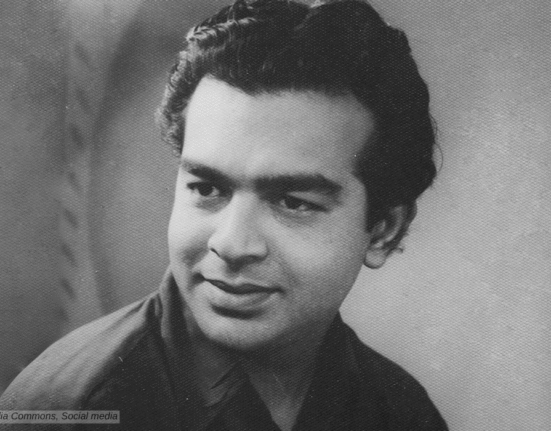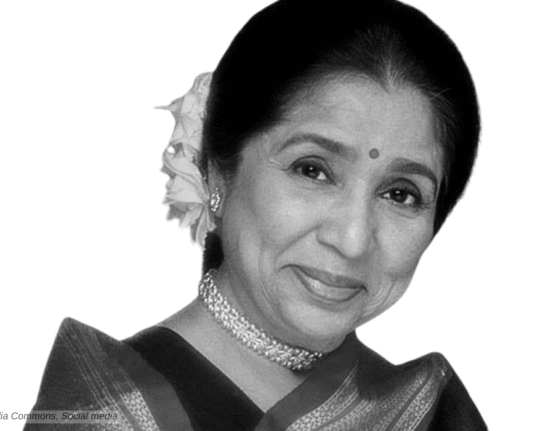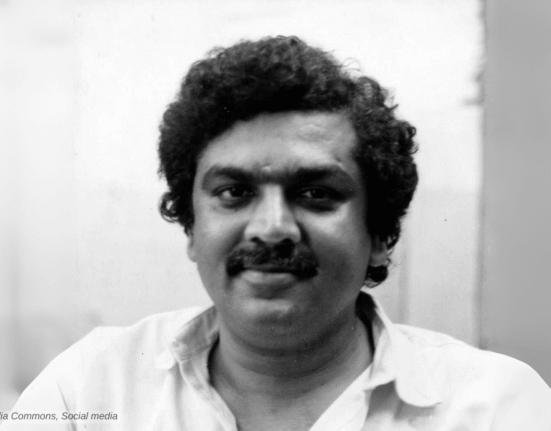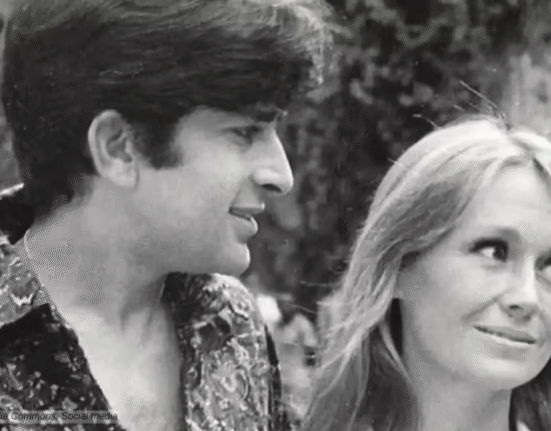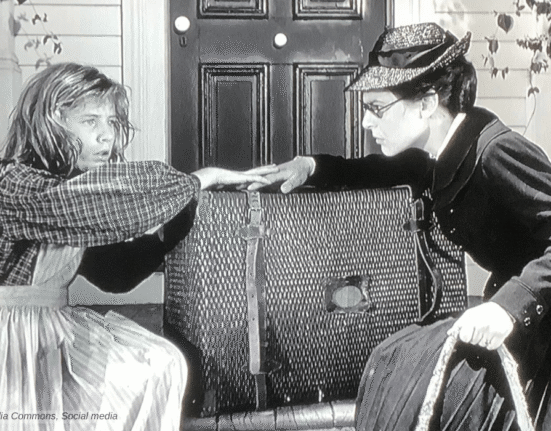The legendary filmmaker, screenwriter, and founder of Wadia Movietone Studio, J B H Wadia, was one of the pioneers of early Indian cinema, who helped shape the Indian film industry and also did the most impossible work of recording important historical events during India’s freedom struggle, as well as recording many legendary artists.
Early Life and Career
Jamshed Boman Homi Wadia, popularly known as J B H Wadia, was born on September 13, 1901, into the illustrious Wadia family in Surat, Gujarat. The Wadia family had a rich legacy as master shipbuilders, a tradition that dated back to the 18th century. Despite his family’s entrepreneurial background, J.B.H. Wadia chose a different path, driven by his passion for cinema.
Wadia pursued higher education in English literature, law, and Zoroastrian languages. J B H Wadia’s journey into the film industry began as a writer and producer in 1928 with “Vasant Leela,” which was made under the banner of Artistic Pictures. He then wrote the story of films like R.S. Choudhury’s Sarover Ni Sundari (1928) and Devare S. Gajanan’s Pratigya Bandhan (1931).
In 1932 he directed Sinh Garjna (1932) and Toofan Mail (1932), both written by his brother Homi Wadia. One of Wadia’s early influences was Hollywood’s swashbuckling adventure stunt films, which were the rage at that time and mesmerised audiences all over the world. This inspiration is evident in his work, which often mirrored the suspense and excitement of Hollywood productions.
Wadia Movietone

Wadia’s collaborative efforts extended to his partnership with his brother, Homi Wadia; Mancherji Bhagwandas Billimoria, a distributor; and the Tata brothers, Burjore and Nadirshaw, with whom he co-founded Wadia Movietone. The partnerships were instrumental in bringing Wadia’s vision to the big screen and ensuring that his films reached a wider audience. Together, they produced a wide range of films, from historical epics to social dramas, but their specialty lies in the action-packed stunt adventures.
In 1933, Wadia Movietone released their first talkie film, “Lal-e-Yaman,” directed by JBH Wadia himself and starring Khambata Jal, Karimja, Padmadevi, Feroze Dastur, and Master Mohammed. The film was a commercial success and established Wadia Movietone as a significant player in the industry.
In 1933, Wadia brothers J B H Wadia and Homi Wadia established “Wadia Movietone Studio” with film distributor Manchersha B. Billimoria and brothers Burjor and Nadirsha Tata, a production house that became synonymous with action-packed adventures.
Wadia then directed films like Vantolio (1933), Bag-E-Misar (1934), Noor-E-Yaman (1935), and Desh Deepak (1935). Wadia’s most notable contribution was the introduction of the “Fearless Nadia,” whose real name was Mary Ann Evans. She was spotted by J. B. H. Wadia when she was working at the Zarko Circus. He, who was very impressed by the athleticism of Nadia and cast her as a slave girl in the 1933 film “Desh Deepak,” then gave her the role of Princess Parizaad in “Noor-e-Yaman.”
The birth of “Fearless Nadia”
aJ B H then cast Nadia in his most ambitious project, “Hunterwali,” which was being directed by his brother Homi Wadia. Initially there were many objections from the financiers and even Homi, but JBH convinced them. “Hunterwali” is the story of vigilante princess Madhuri, who fights injustice and treason in her father’s kingdom by going undercover with a whip and a mask. The movie became a smash hit at the box office and was one of the top films of the decade. It was the birth of “Fearless Nadia.”
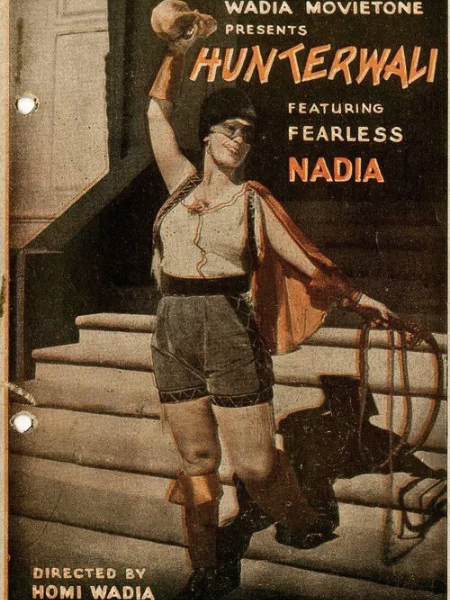
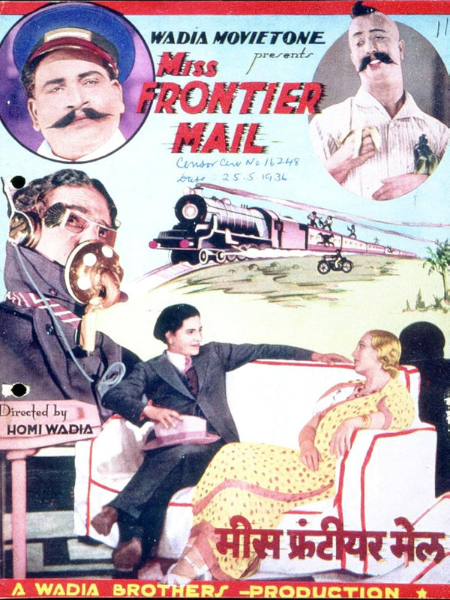
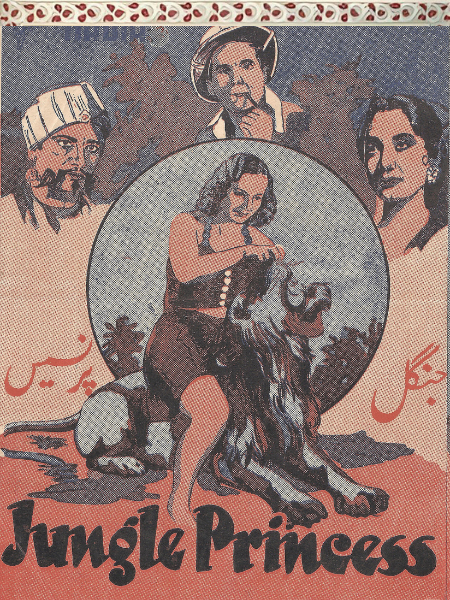
J. B. H. Wadia then produce films like including Fashionable India (1935), Miss Frontier Mail (1936), Hind Kesari (1935), Toofani Tarzan (1937), Lutaru Lalna (1938), Vanaraja Karzan (1938), Punjab Mail (1939), Hind Ka Lal (1940), Diamond Queen (1940), Bambaiwali (1941), Muqabala (1942), Hunterwali Ki Beti (1943), and Vishvas (1943).
With these films, Wadia Movietone became known for their fearless approach to filmmaking, often tackling social issues and introducing strong female characters, which was a rarity at the time.
In 1942, Wadia Movietone presents “Ekta,” which was the first Sindhi-language film of India. The film starring Karim Bux Nizamani, Kaushalya, Gulshan Sufi, and Hari Shivdasani. It was financed by Sindhi actor, writer, and social worker Karim Bux Nizamani. In 1942, Homi Wadia parted ways with Wadia Movietone and established Basant Pictures, while JBH continued to make films under the banner of Wadia Movietone or Wadia Films Ltd.
Other Works
Apart from producing these films, J B H was also involved in the writing of these films. In 1937 he wrote and produced Navjawan (1937), directed by Aspi Irani, which was the first Hindi talkie without any songs, an unheard and unimaginable occurrence in those times. The film created a huge uproar as people protested against the film, as they felt cheated by the absence of songs.
He also wrote films like R.N. Vaidya’s Hurricane Hansa (1937) and Madhu Bose’s Raj Nartaki, aka Court Dancer (1941), a Hindi, Bengali & English trilingual film, which was also released in America by Columbia Pictures.
In 1943, Wadia Films came up with “Ankh Ki Sharm,” starring Prithviraj Kapoor, Trilok Kapoor and Kaushalya and directed by Balwant Bhatt. In 1946, Homi Wadia returned to direct the film “Amar Raj,” starring Trilok Kapoor, Rehana and Nirupa Roy.
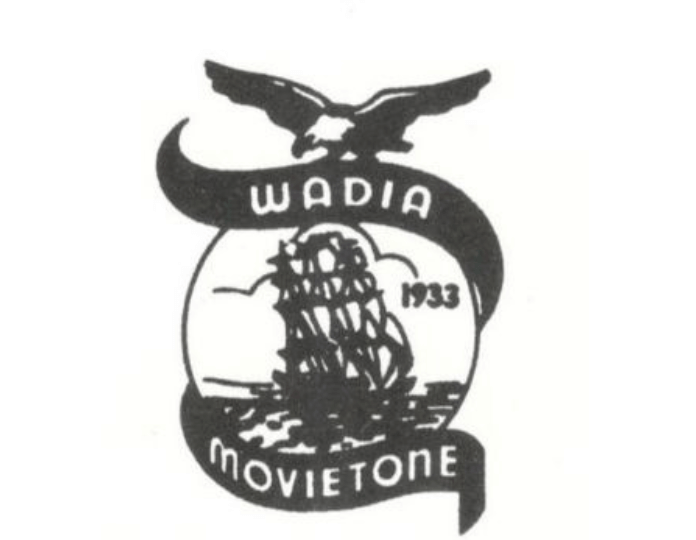
Apart from being a pioneering producer, he was also a reputed writer and director. J. B. H. Wadia returned to direction with “Krishnabhakta Bodana (1944)” starring Sheikh Mukhtar, Meera, and Gope. He continued to direct films like “Madhosh (1951)” starring Meena Kumari and Manhar Desai, “Husn Ka Chor (1953)” with Usha Kiran and Mahipal, “Veer Rajputani (1955)” with Shakila and Manhar Desai, “Captain Kishore (1957)” with Shashikala and Suresh, “Duniya Jhukti Hai (1960)” with Sunil Dutt and Shyama, “Tasveer (1966)” with Feroz Khan and Kalpana, and “Saaz Aur Sanam (1971)” with Rekha.
J. B. H. Wadia also wrote many memorable films such as Muqabla (1942), Aladdin Aur Jadui Chirag (1952), Gul Sanobar (1953), Alibaba Aur Chalis Chor (1954), Daku (1955), Hatim Tai (1956), Zimbo (1958), Zabak (1961), Reporter Raju (1962), Char Dervesh (1964), Alibaba Aur Chalis Chor (1966), and Saat Sawal (1971).
J B H Wadia : Not Just a Filmmaker
J B H Wadia was not just a filmmaker but also a social and political activist. He actively participated in the Indian freedom struggle and was influenced by the ideas of M.N. Roy, a prominent radical humanist. Wadia’s films often addressed social issues such as women’s emancipation, the abolition of the caste system, and communal harmony.
The Wadia brothers have one more very important achievement in their bag: as responsible and aware citizens of India, they were also aware of political activities in India before 1947. Wadia was a pioneer in promoting the documentary movement in India. He produced the first indigenous newsreel, “Indian Gazette,” and the first feature-length documentary, “Haripura Congress.”
Some of their notable work includes numerous documentary newsreels, recordings of major political events related to the freedom movement in India, like people’s protests, Congress Sessions, programs of political and social organisations, and rallies of leaders like Mahatma Gandhi.
Later on, they donated all their photos and short movies to the government and other museums. Whatever photos and reels we see today from times before 1947, most of them were shot by the Wadia brothers. These pictures and reels of historical documents give us an idea about the struggle of our people during the freedom movement of India. And all credit goes to the Wadia brothers.
The Wadia brothers also recorded early classical and semi-classical musicians and singers under the Wadia Movietone’s Variety Programme. It featured legendary artists like Feroz Dastur, Bal Gandharva, Malika Pukhraj, and Pandit Tirthankar, among many others.
Personal Life
Wadia married Hilla Patel, and together they had two children, a son named Vinci and a daughter named Haidee. Vinci went on to marry Nargis Khambata, the first woman in Asia to start her own advertising agency. Haidee moved to Germany after her marriage to Gerhard Meier, a German citizen. Vinci and Nargis had two sons, Roy and Riyad.
J. B. H. Wadia’s grandson Roy Wadia, who currently is associated with WHO, told Tasweermahal that in 1942, Homi Wadia chose to break away and started Basant Studios because he wanted to continue making stunt films while JBH wanted to make more “serious” films. However, the brothers continued to support one another and helped each other out in many ways.
Although Wadia Movietone and Basant Pictures were making films independently. The two banners were housed at the same vast studio lot in Chembur. Mr. Roy Wadia further states that Wadia Movietone still exists as an archive under the guidance of the Film Heritage Foundation of India, while Basant’s archives have not been collated for public access yet.
He said that “Wadia Movietone briefly resumed film production under my late brother Riyad Wadia, who made an amazing documentary, “Fearless: The Hunterwali Story,” on the life and rise of Fearless Nadia, who went on to marry his great uncle Homi Wadia. Riyad also made two landmark LGBTIQ+ films, “BOMgAY” and “A Mermaid Called Aida.” Riyad passed away in 2003, aged 36.
Death and Legacy
J B H Wadia passed away in 1986, but his impact on Indian cinema is still felt today. JBH Wadia was a pioneer who pushed the boundaries of the film industry, introducing new genres and themes and giving a voice to strong female characters. Wadia Movietone’s motto, “Enlightenment Through Entertainment,” reflected his belief in the transformative power of cinema. His life and works remain a testament to his visionary spirit and dedication to the art of filmmaking.
J B H Wadia on IMDB


